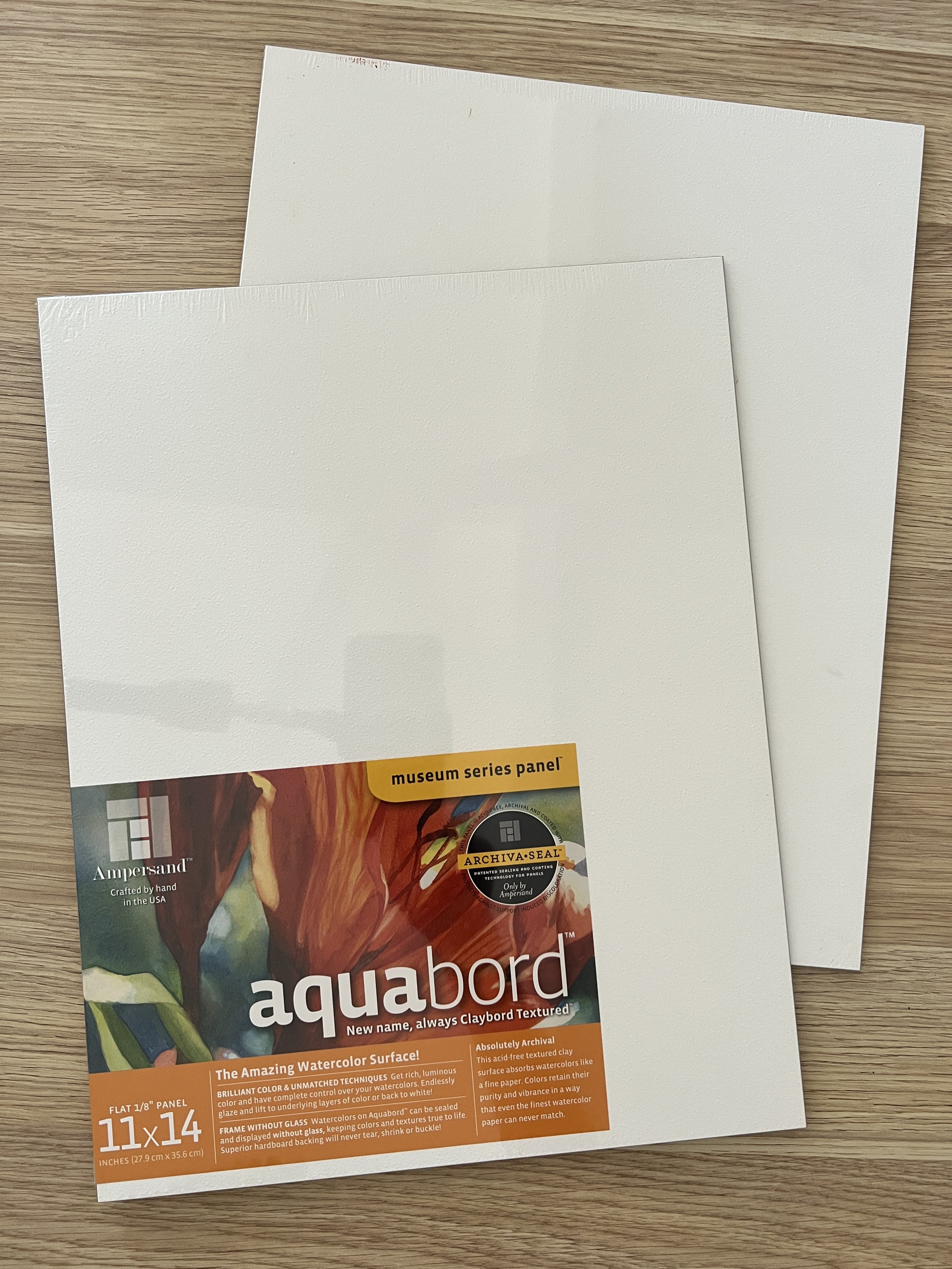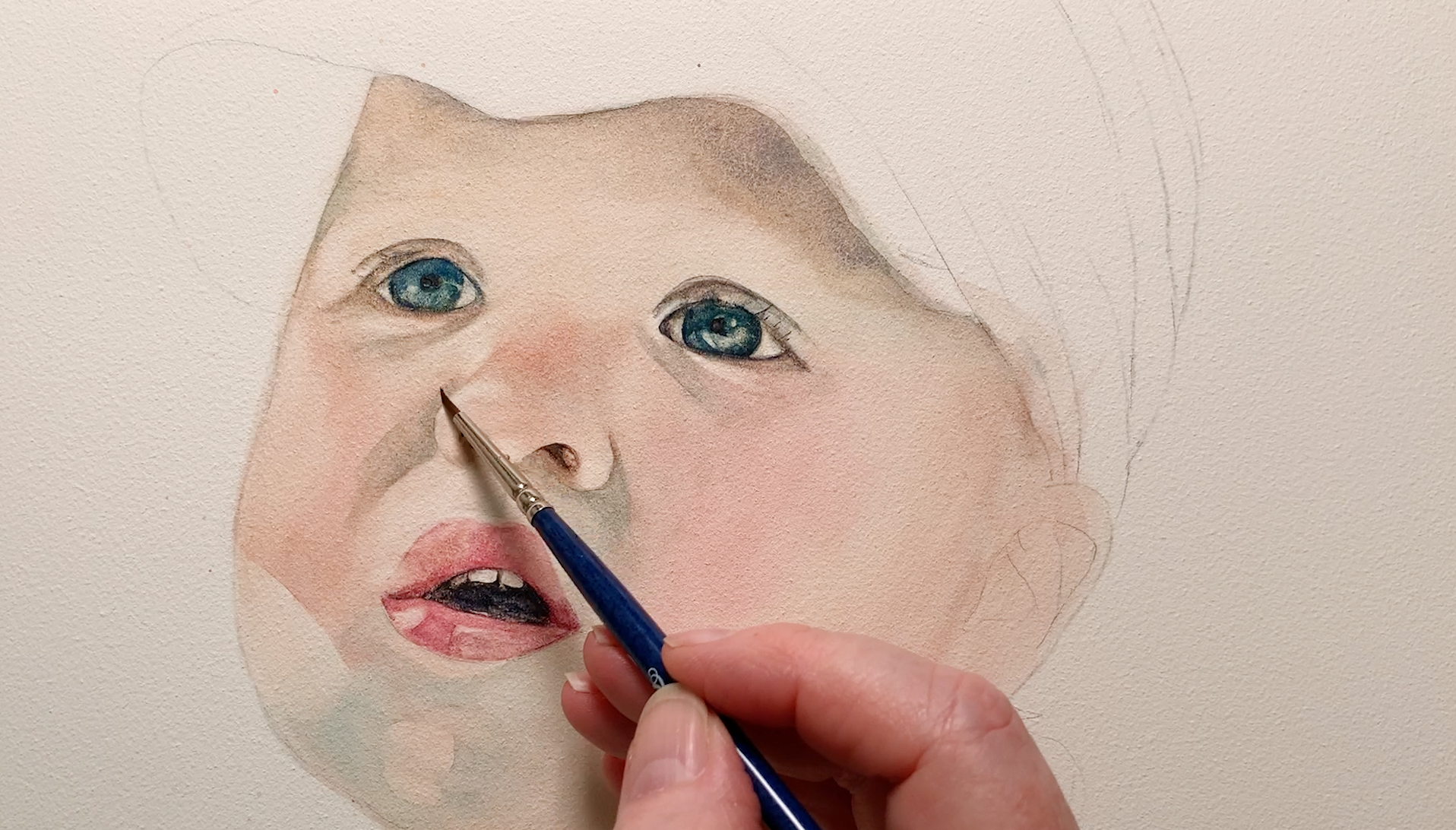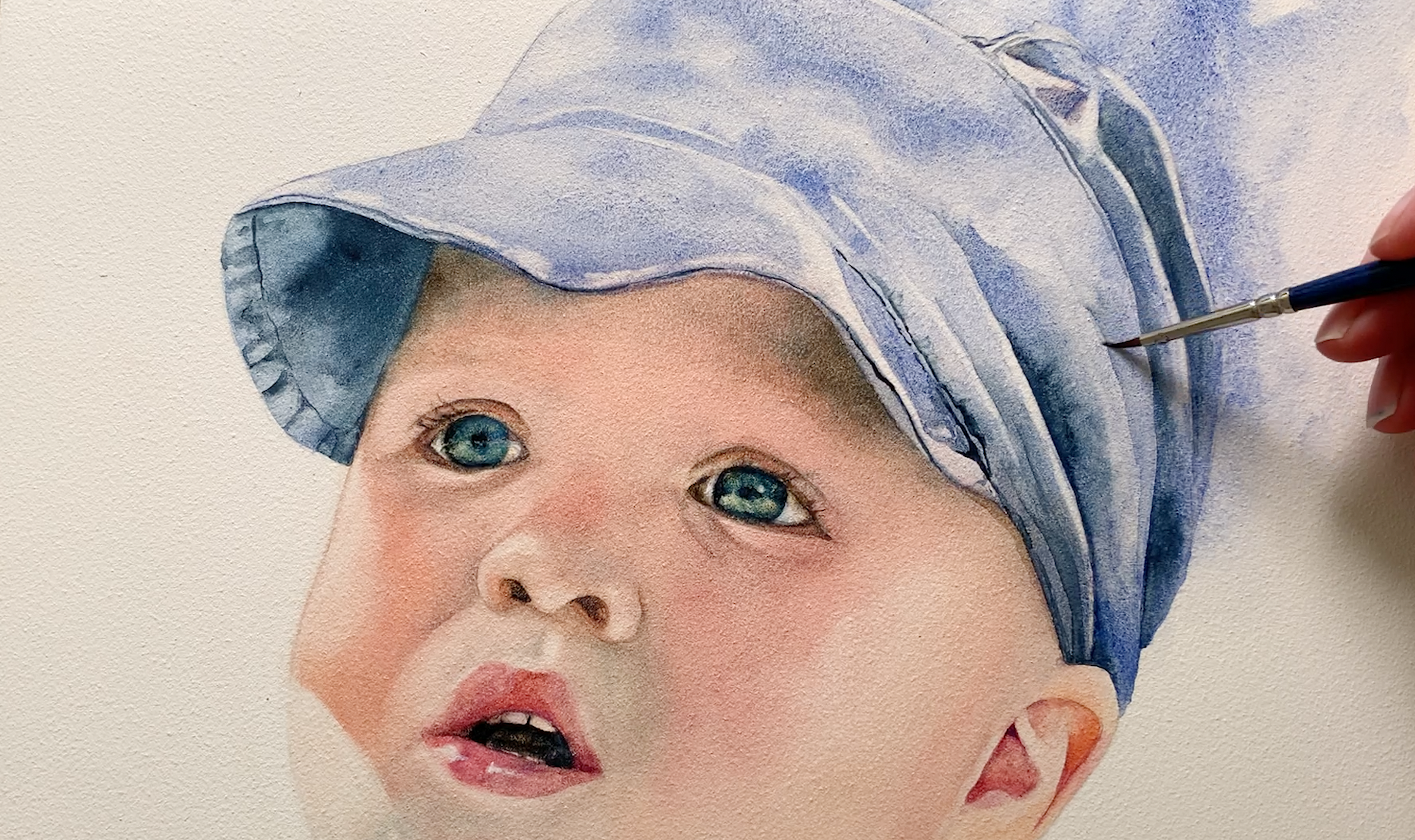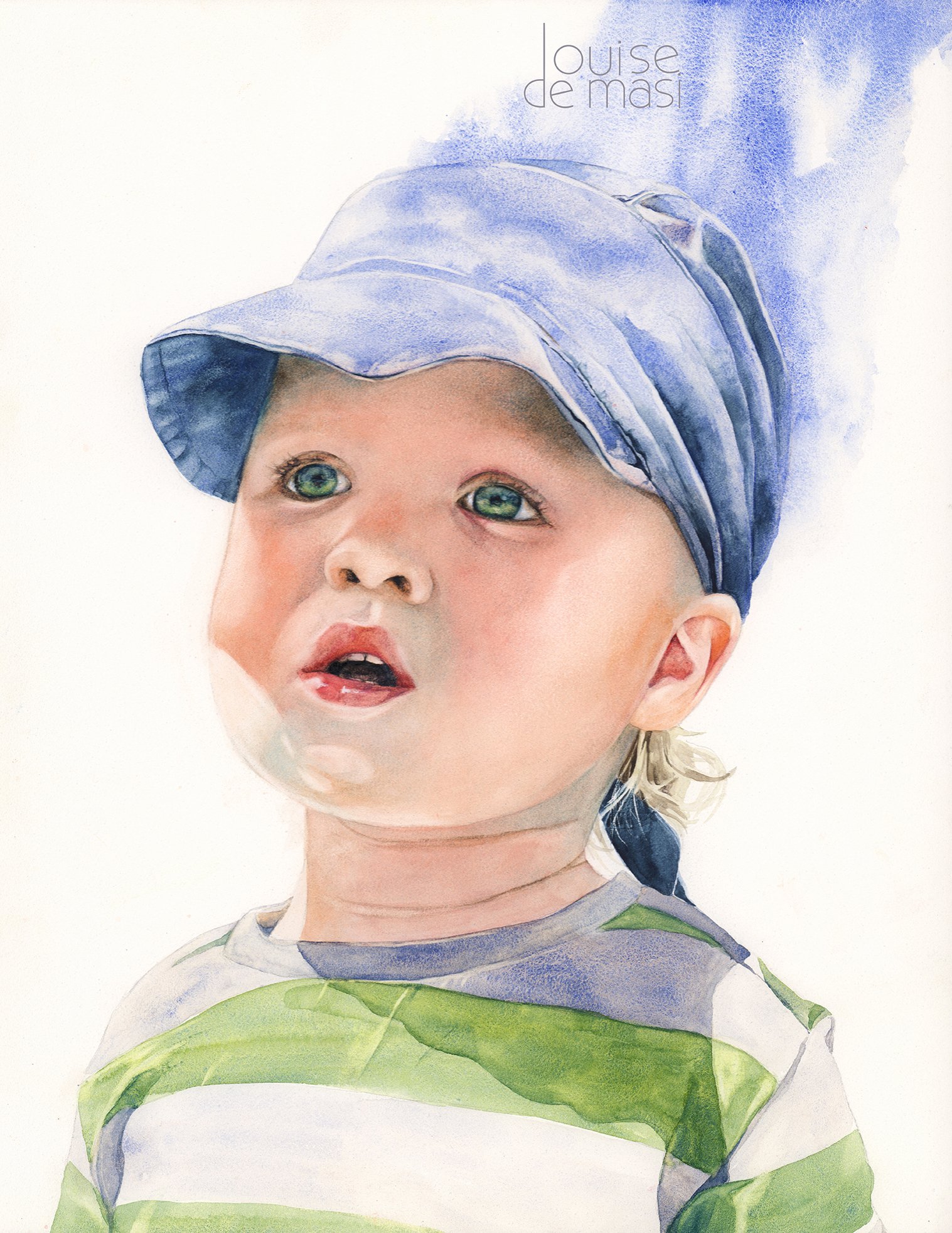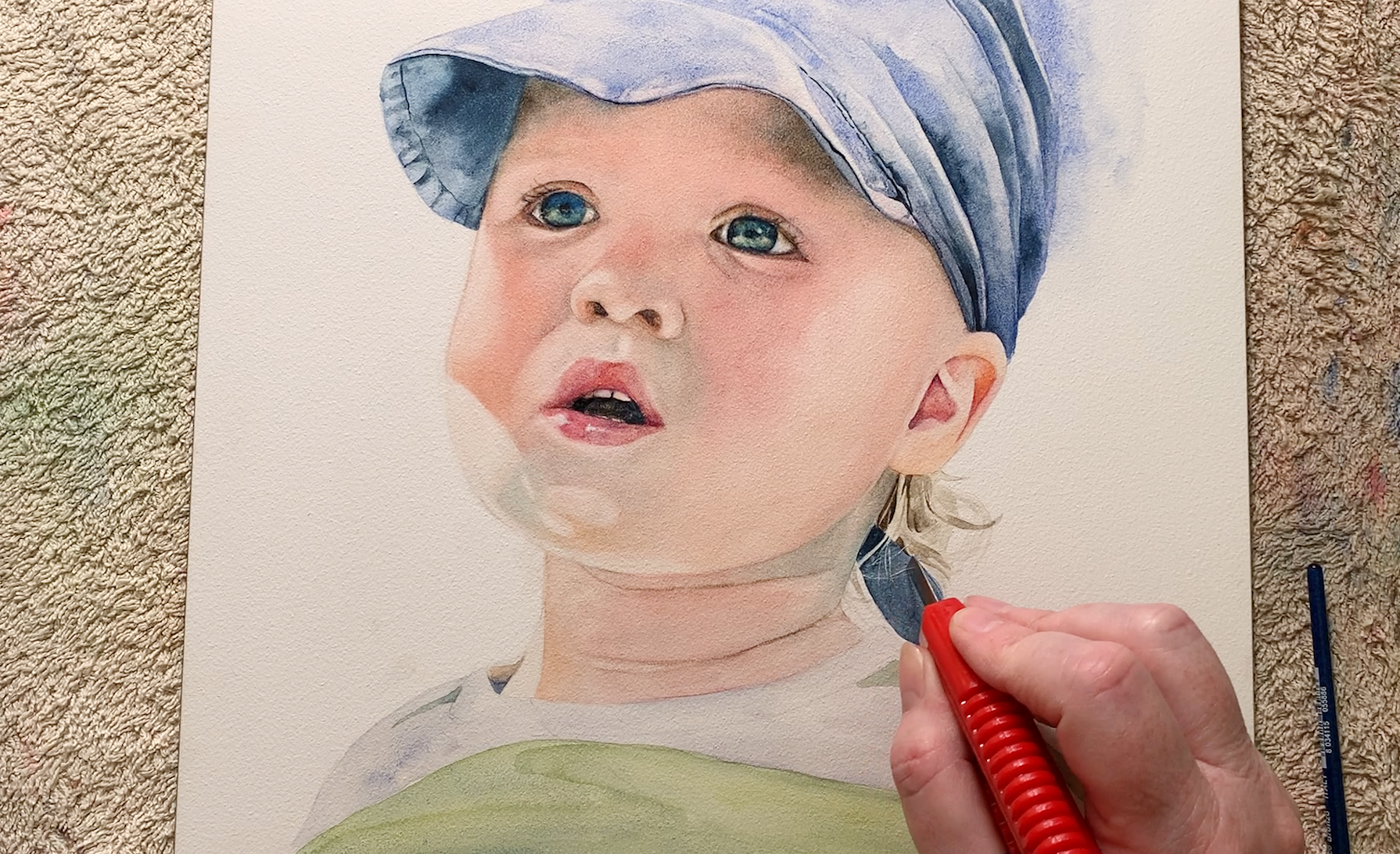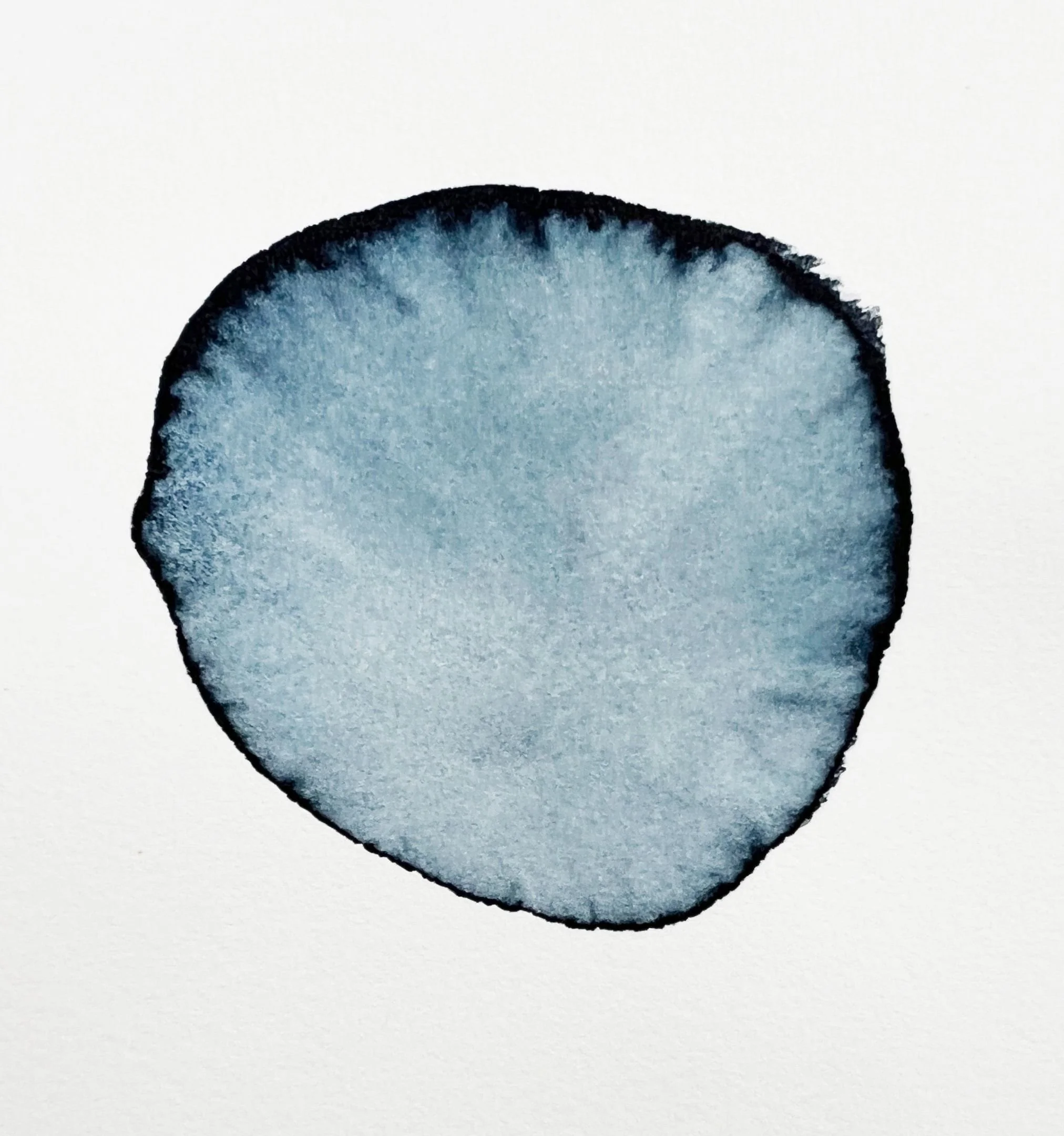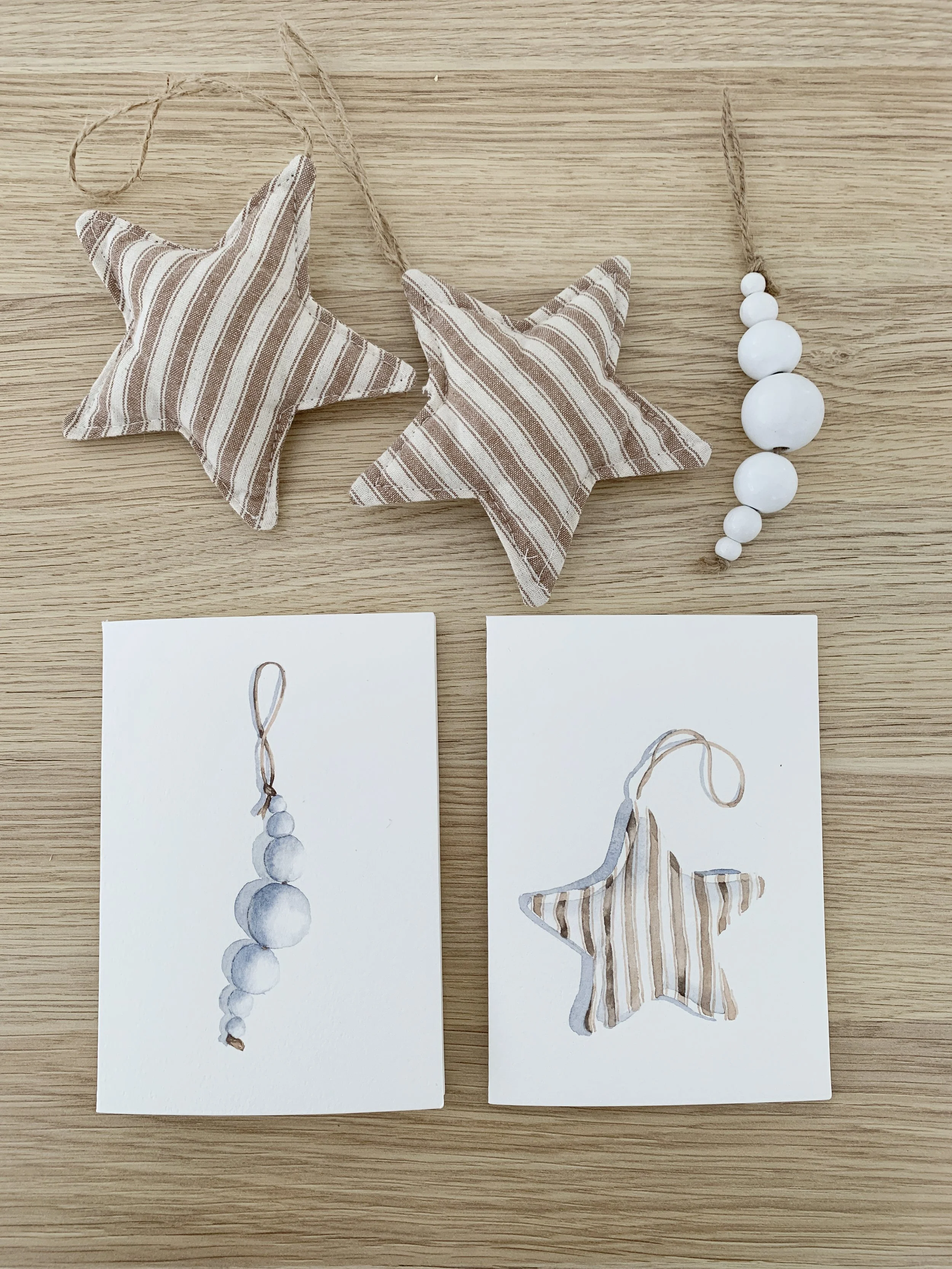Ampersand Aquabord Panels for Watercolour
Painting with watercolours on Ampersand Aquabord can be a fun and interesting experience once you adapt to the unique qualities of this surface. Here I will share some tips to help you get the most out of your watercolour paintings on Aquabord.
What is Aquabord?
Ampersand Aquabord is a unique and innovative surface designed for artists, particularly those who work with water-based media like watercolours, gouache, acrylic and ink. According to the Ampersand Art Supply product page it is made from 'warp-resistant 1/8" FSC-certified Hardbord™.'
It has an acid free clay and mineral ground coating applied to the painting surface.
The surface texture is said to be similar to cold pressed watercolour paper.
Adapting to Aquabord: A Shift in Painting Techniques
Painting on Aquabord offers a unique experience compared to traditional watercolour paper. Watercolour paper encourages exploration and experimentation, striking a delicate balance between control and spontaneity. The paint dances over the wet paper, producing surprising and delightful effects.
However, painting on Aquabord requires a distinct and different approach. The clay surface is absorbent and it doesn't stay wet for long. When I use it, I have to change my normal painting method.
Painting tips for painting on Aquabord
Preparation
Ampersand Art Supply recommend wetting the surface of the Aquabord to release trapped air bubbles before you start your painting. I use a large flat brush to wet it with some clean water and when it's dry I transfer my drawing onto the surface.
Brushes
I use inexpensive synthetic brushes when painting on Aquabord panels. The surface texture is abrasive compared to watercolour paper and I worry that it may wear down the bristles of my expensive brushes.
When I paint with watercolour on cold press paper I prefer to use large brushes where I can, but when I paint on Aquabord I find it easier to paint with smaller brushes because I don't need to use as much water.
I also find it easier to move the paint around if the brushes are smaller and more rigid but I have read that soft, natural haired brushes are useful in the final stages of the painting because they are less likely to disturb the underlying layers, ensuring a smoother finish.
Work light to dark
Working from light to dark is a common practice in watercolour painting, and it generally applies to painting on Aquabord as well. This approach allows you to build up the colours gradually and maintain the transparency and luminosity that watercolours are known for.
Work in Layers
Unlike watercolour paper, where too many layers may affect the luminosity of the paint, Aquaboard allows you to work in many layers. When I use it, I find that the more layers I apply, the smoother the washes begin to look.
The skin looks patchy here.
As more layers were applied the smoother the skin became.
To not disturb the underlying layer, it's important to make sure each layer is totally dry before applying the next one. I use a hair dryer to dry the paint between layers.
Make sure you have an old towel or some paper towel nearby to blot your brush on after loading it with paint. Maintaining the wetness level in the brush is important.
It's easy to lift colour on Aquabord
When you apply paint to traditional watercolour paper, the paint penetrates the paper's surface, becoming a permanent part of the painting. Correcting mistakes on paper can be challenging, if not impossible, as the paint bonds with the fibres of the paper.
However, the experience shifts significantly when you paint on Aquabord. The paint remains workable and movable for as long as you need it to be. This flexibility offers both advantages and potential challenges.
On the one hand, it's advantageous because you can paint with the confidence that any errors or changes of heart can be easily corrected. A simple swipe with a damp brush or wet sponge can lift off unwanted paint.
Yet, the ease with which paint lifts off Aquabord can also pose a unique challenge, particularly if you're new to this characteristic. It may require a shift in your painting approach as you navigate the fine line between desired adjustments and unintentional paint removal.
Advantages of using Ampersand Aquabord.
It's forgiving
You can paint on Aquabord with confidence knowing that most mistakes can be corrected or wiped away.
Vibrant Colour
Colours may appear more vibrant on Aquabord compared to watercolour paper because of the unique characteristics of the surface. Its clay-coated, absorbent surface allows watercolour pigments to sit on top rather than being absorbed deeply into the paper fibres. This results in the colours staying more vivid and vibrant because they are not diffused or muted by the paper.
Lifting color is easy
If you make a mistake or want to lighten an area, you can gently lift off paint using a clean, damp brush or sponge. The paint doesn't penetrate as deeply as on watercolour paper, making corrections more forgiving. Masking fluid is not needed because you can take the paint off completely- back to the white surface.
Overworking a painting is not a problem
Watercolour artists are usually mindful of not overworking their paintings. An overworked watercolour painting might show heavy layering, the luminosity and transparency might be lost and colours might appear muddy. When you look closely at an overworked watercolour painting you might see that the brushwork shows signs of repeated and laboured strokes, and you may not see the fluid and graceful movement that a watercolour painting often has.
This problem is less likely to occur when you use an Aquabord panel because of its clay-coated surface. It allows watercolour pigments to remain workable for an extended period. Unlike traditional watercolour paper, where the paint is quickly absorbed and dries rapidly, Aquabord provides you with more time to manipulate and blend colours. You can apply multiple layers of colour without the risk of creating muddy or dull colours and if you do get into difficulty, it's easy to remove your error.
Scratch into the surface
The clay surface of Ampersand Aquabord offers a unique advantage to artists by making it easy to scratch into the surface. This characteristic opens up a range of creative possibilities. You can use a stylus or craft knife to gently remove areas of colour.
No paper stretching required
I always stretch watercolour paper to keep it flat when I paint on it. While it's quick to do this, I have to make sure I'm organised and have paper ready to work on when I want to start painting.
Ampersand Aquabords eliminate the need for stretching. You can start painting on them right away. They stay flat and rigid no matter how wet you make the panel. Their solid surface won't tear, shrink or buckle and this also makes them perfect for plein air painting.
Aquabord panels don't need to be framed behind glass
Another great advantage of painting on Aquabords is that they can be framed without glass. You will need to protect the surface with some spray on varnish though. I like to use Krylon UV archival varnish to protect and seal the paintings I have completed on Aquabord.
Differences with painting on Aquabord
It's different to painting on watercolour paper
I have a deep love for painting on watercolour paper. I enjoy painting wet on wet on paper and the wonderful dance between paint and water, weaving together to craft stunning effects, continues to thrill me. Painting on Aquabord is different. When I use it, I have to alter my painting method. I need more practice using it to fully understand it but I am intrigued by this surface and I loved painting my little grandson on it. I plan to do some more paintings on Aquabord. It's a surface that I will continue to experiment with and hopefully unlock new creative horizons.
If you are interested in learning to paint in watercolour, I have over 170 online, voiced over watercolour tutorials for all skill levels.
Prints and original paintings are available to purchase as a print in the shop.
